
Cooler days, longer nights, and changing leaves … many people think fall is the best of the four seasons. Embrace the return of pumpkin spice season by sharing these interesting facts about fall with your students. They’re perfect for morning meetings, bell-ringer activities, and quick brain breaks throughout the day!
General Facts About Fall
In the Northern Hemisphere, fall starts in September and ends in December.

Fall is the season between summer and winter. (Time and Date)
In the Southern Hemisphere, fall begins in March and ends in June.

In the Southern Hemisphere, the seasons are switched due to the tilt of the Earth. (NOAA)
The first day of fall is determined by the date of the autumnal equinox, which varies from year to year.
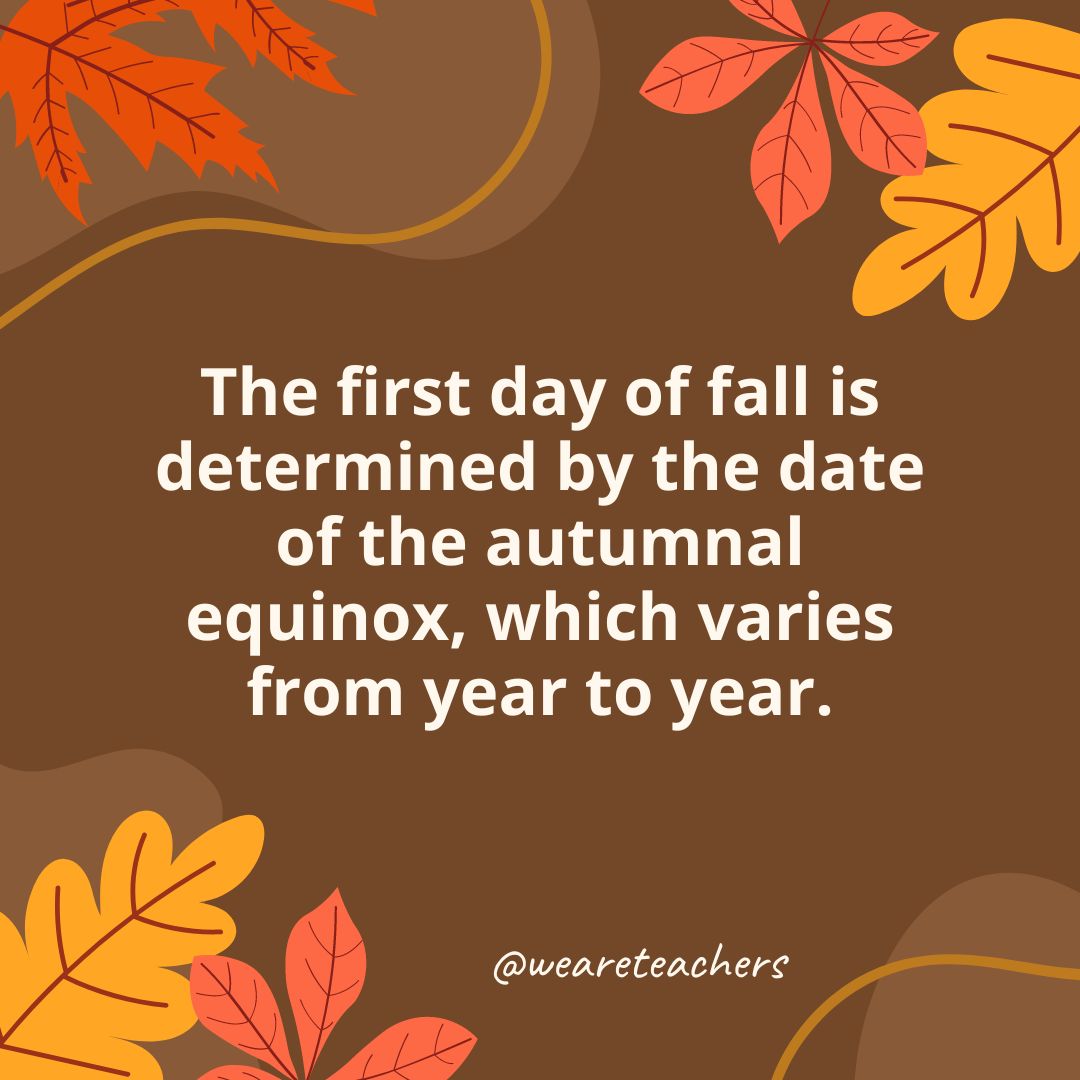
It usually takes place on September 22 or 23 in the Northern Hemisphere. (Autumnal Equinox at Britannica)
The Earth has two equinoxes each year, one in spring and one in fall.
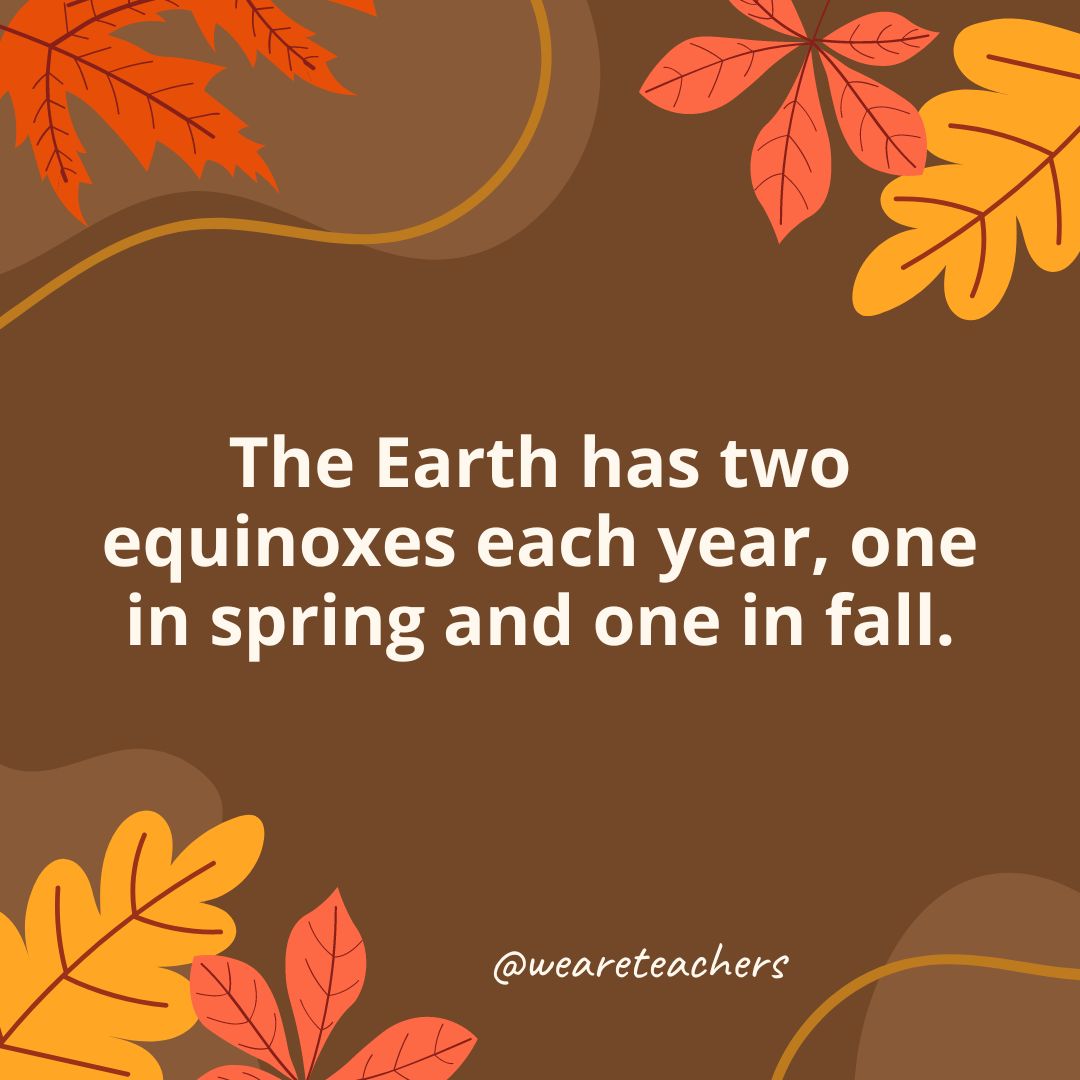
On these days, every place on the planet receives nearly equal amounts of daylight hours and nighttime hours. (National Weather Service)
During the fall months, the Northern Hemisphere tilts farther and farther away from the sun.
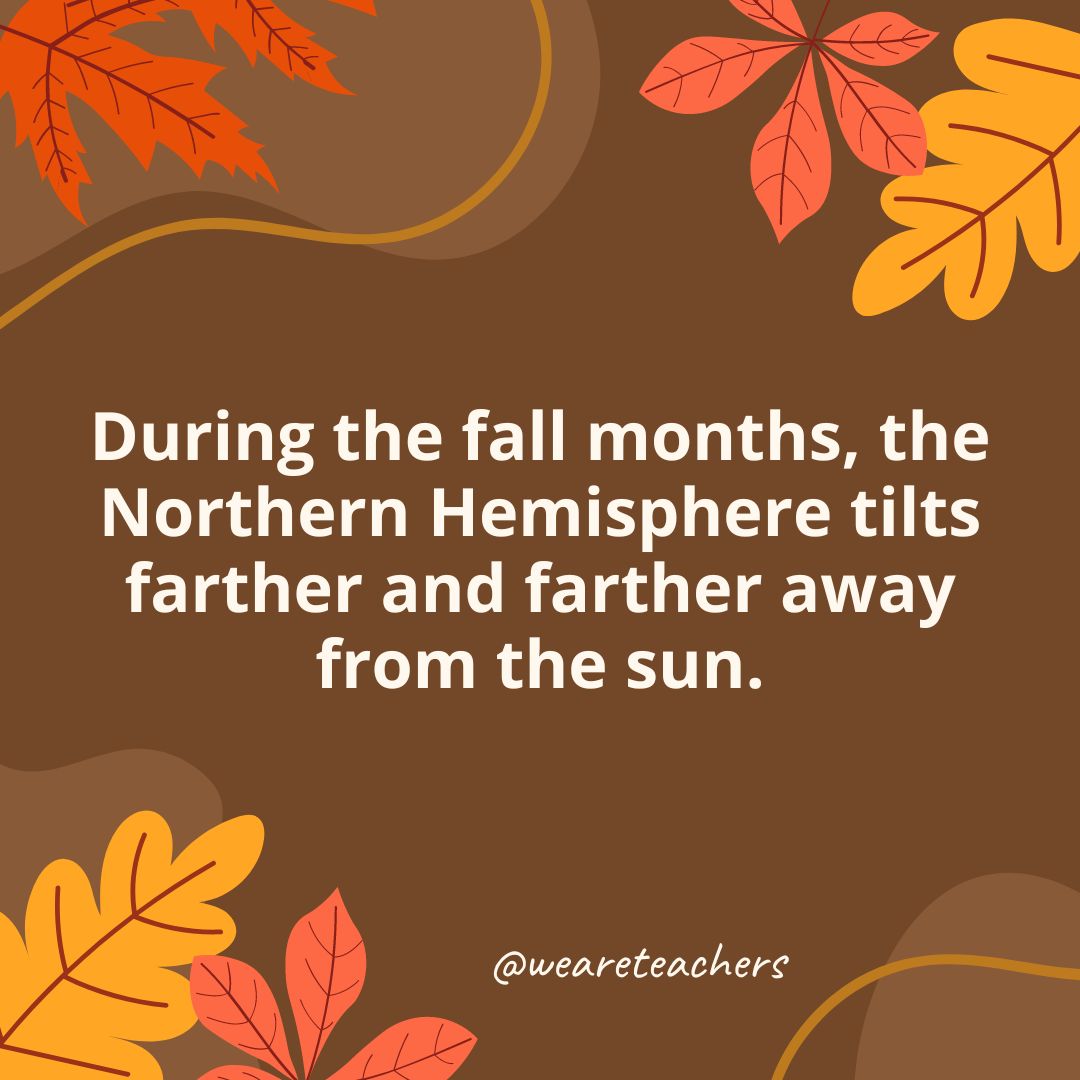
This makes the days shorter, and in most places the temperatures get progressively colder. (NASA Space Place)
Unique Facts About Fall
The word “autumn” dates all the way back to the 1300s, making it the original name for the season.
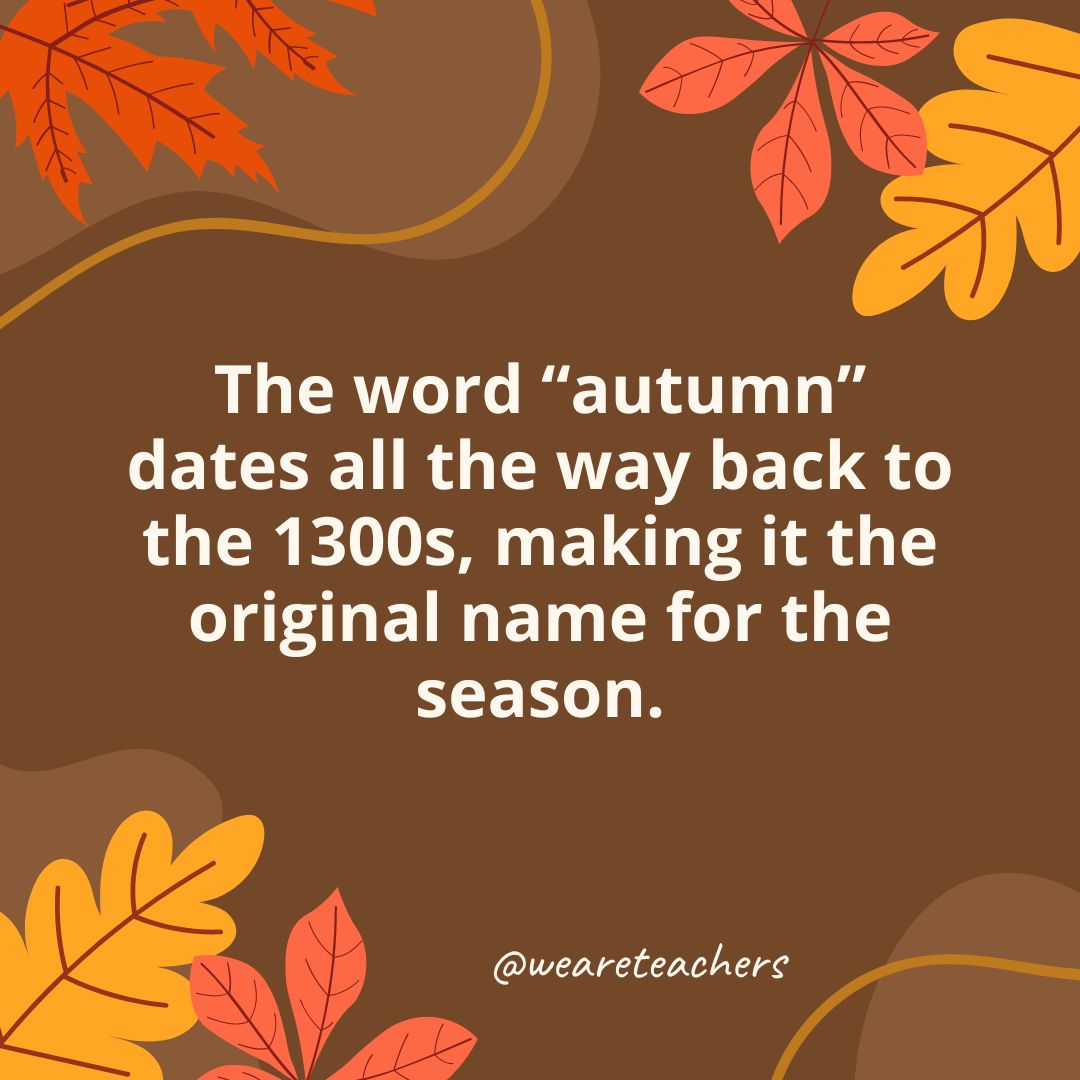
Fall is also called autumn. (Merriam-Webster)
Poets often described this season using the phrase “the fall of the leaves.”
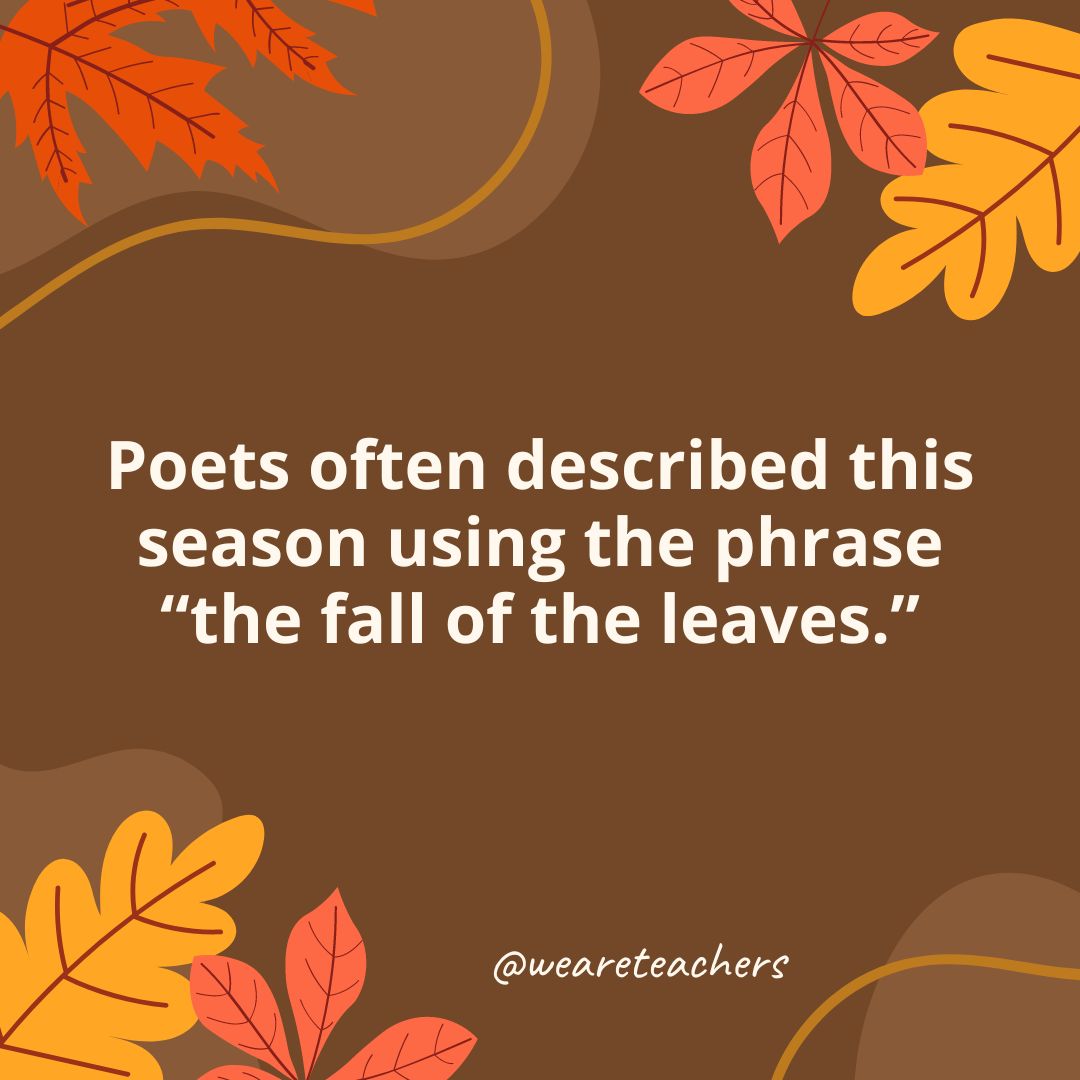
Over time, this was shortened to “fall.” This word remains popular today, although it’s more common in North America than in other English-speaking countries. (Merriam-Webster)
The harvest moon is the full moon that falls closest to the autumnal equinox each year.
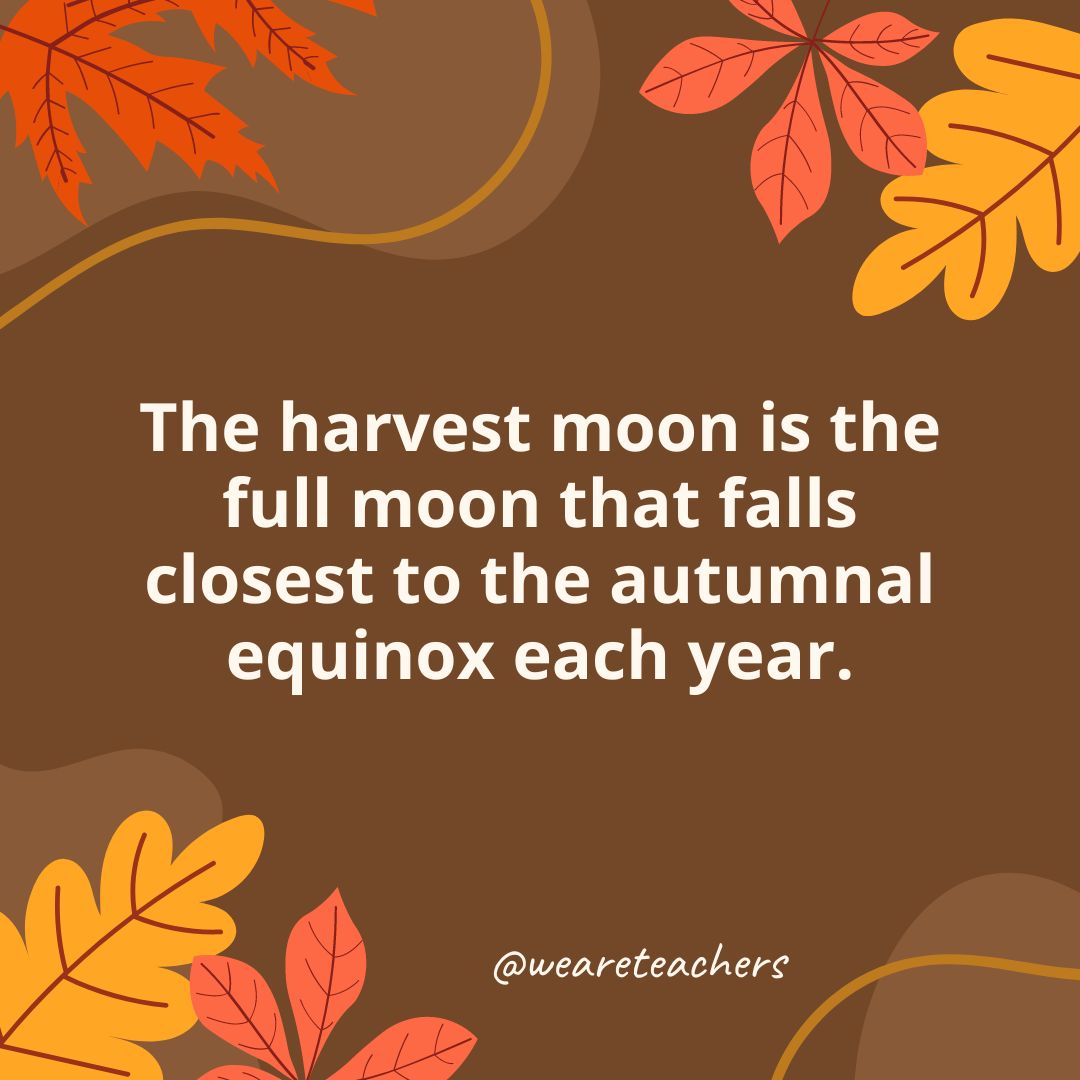
The light of the moon is said to help farmers work late into the night gathering crops from the fields. (Royal Museums Greenwich)
Although fall doesn’t begin until later in September by the calendar, many in the United States consider Labor Day to be the end of summer and beginning of autumn.
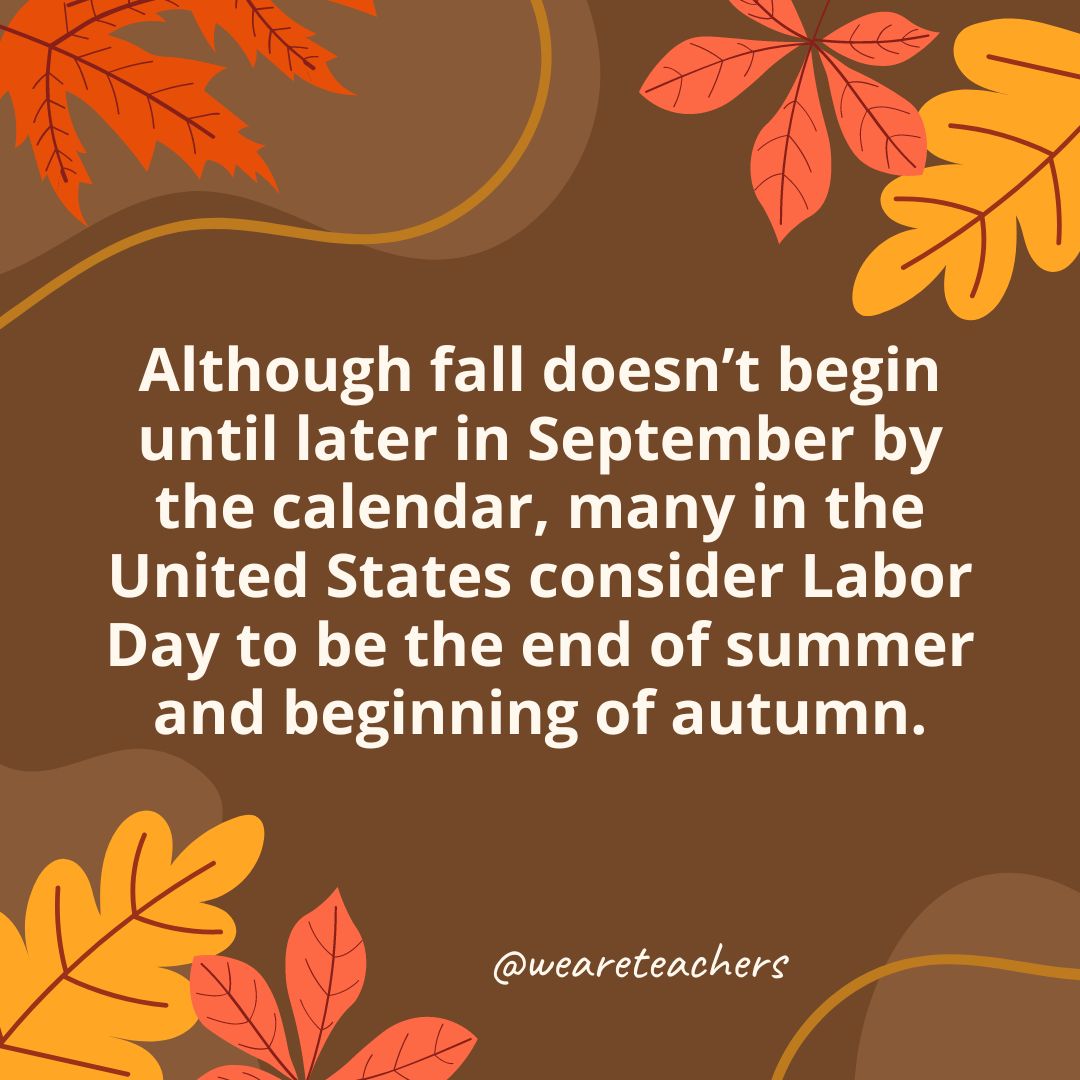
One old tradition states that people shouldn’t wear white shoes and clothing after Labor Day, though most people no longer follow this rule. (Emily Post Etiquette)
Football is a popular fall sport in the United States.
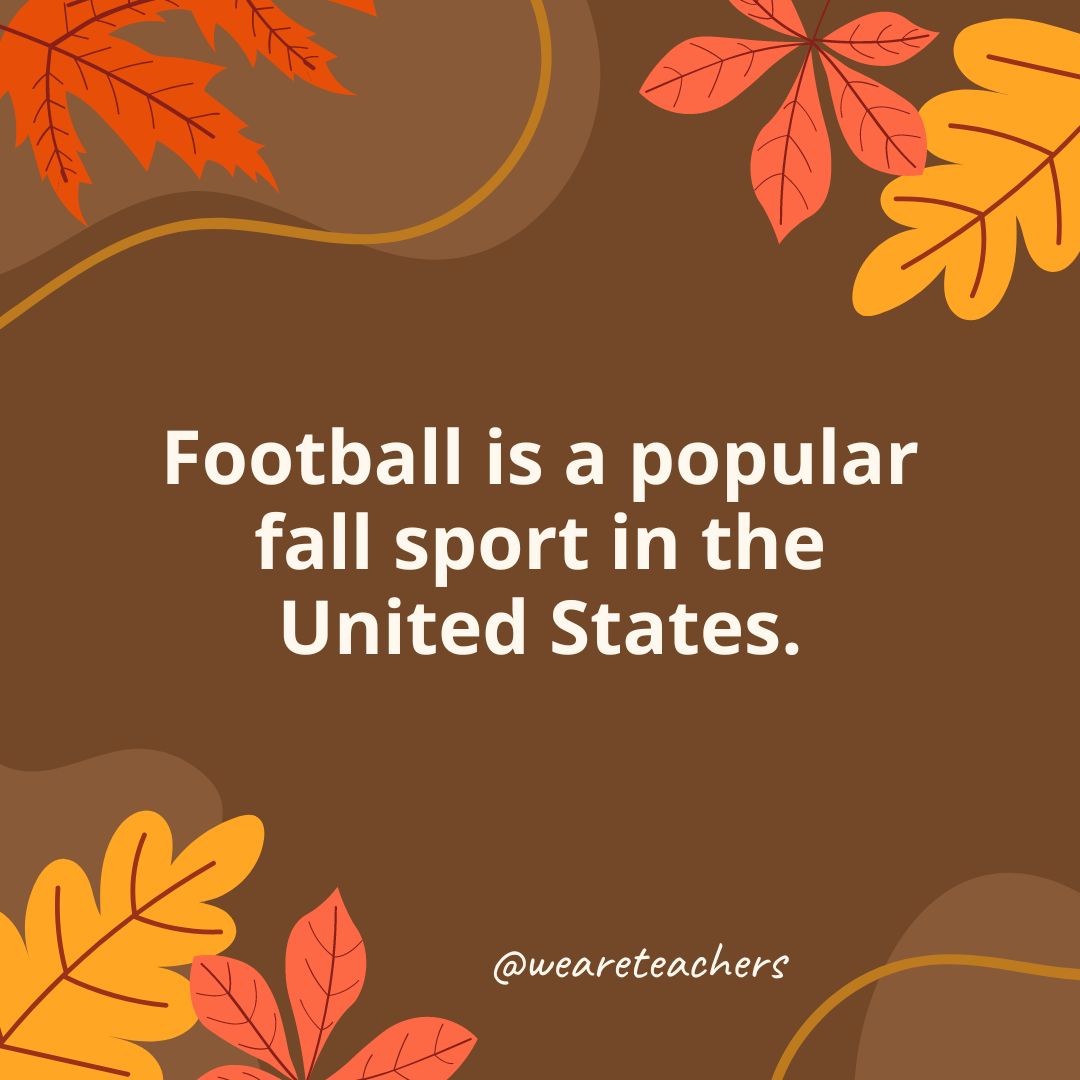
There are 32 pro football teams in the NFL, and many colleges, high schools, and communities have their own football teams as well. (NFL.com)
Fall Facts About Nature and Wildlife
Leaves turn orange in fall because the change in daylight and temperatures causes many deciduous trees to stop production of the chlorophyll that makes leaves green.
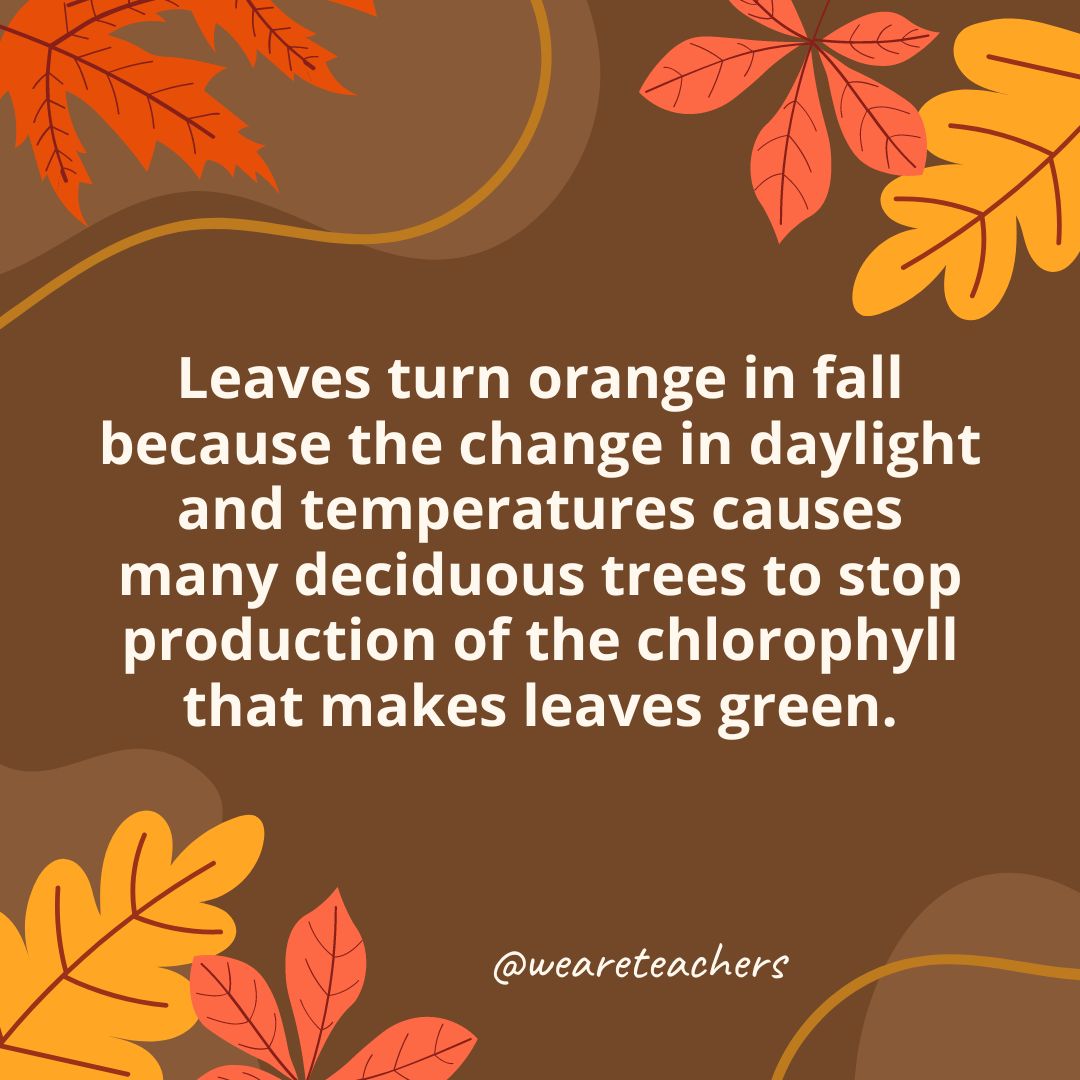
The remaining pigments in the leaves boast vivid colors like red, yellow, and orange. (Smithsonian)
Many people love to see the brilliant autumn leaves and take trips to areas where the show is especially spectacular, like New England.
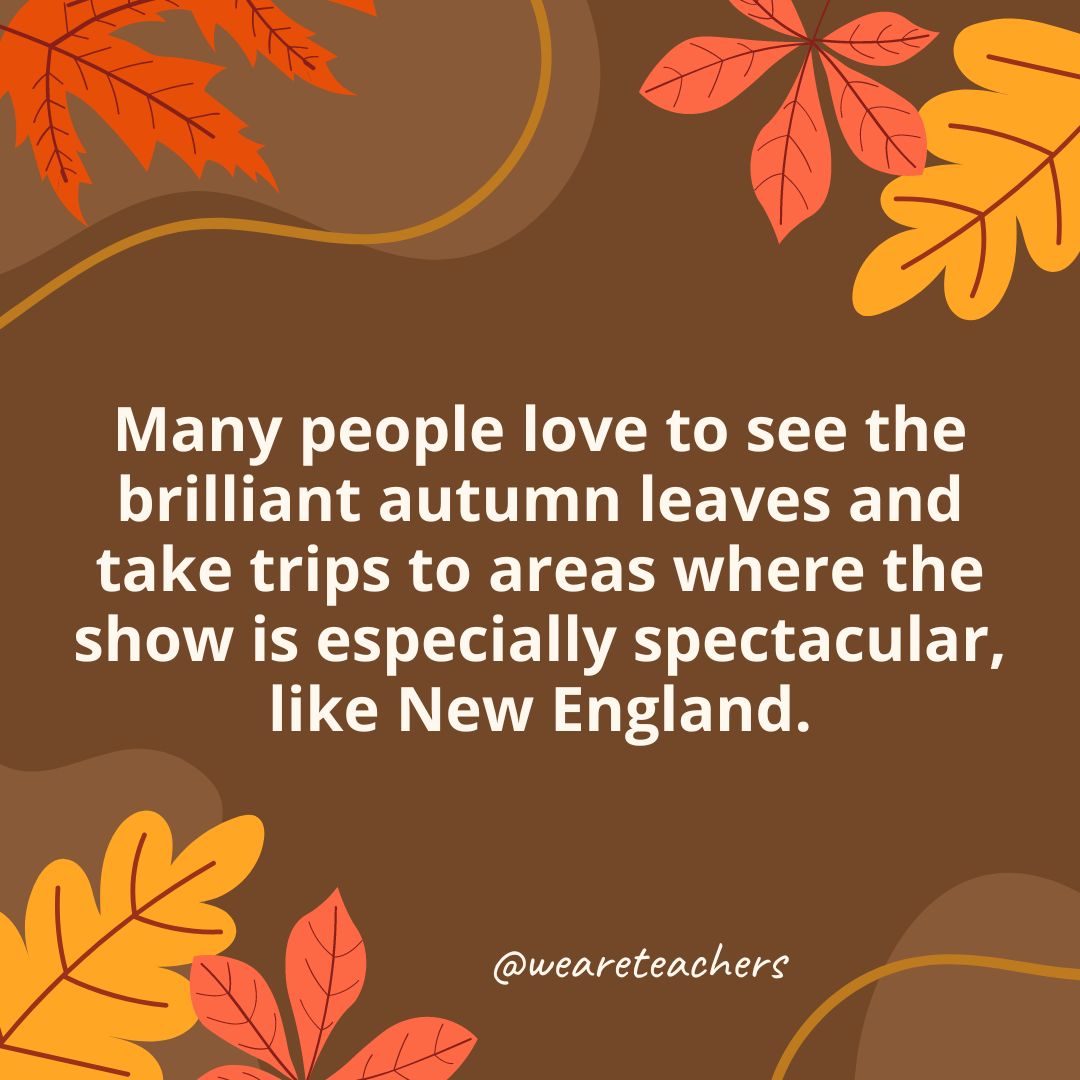
These “leaf peepers” can even use tracking maps online to see the current fall foliage status! (American Forests)
Many animals spend the fall months preparing for winter by storing up food.
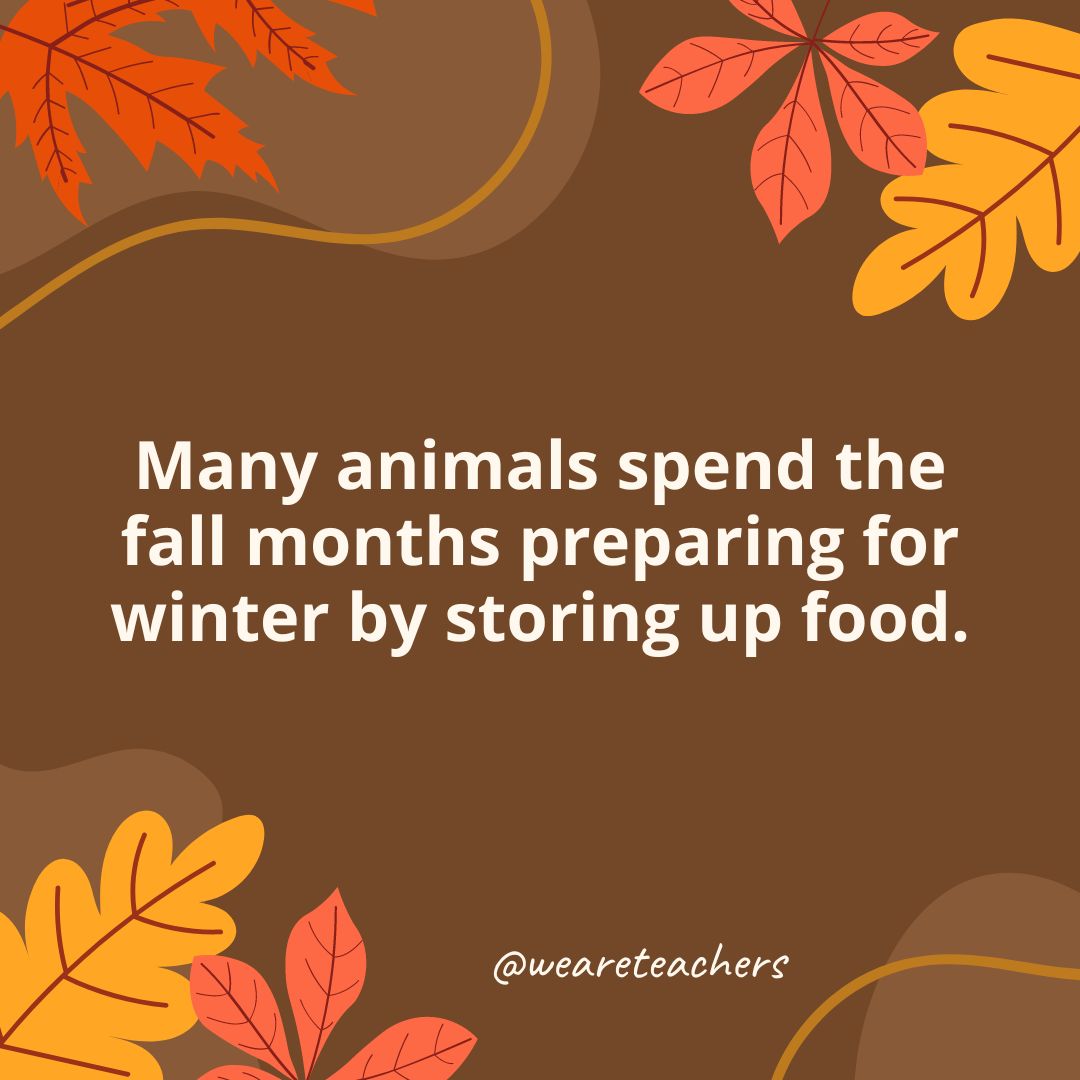
Squirrels can store up to 3,000 nuts each at this time, and their brains actually get a little bigger to help them remember where they hid them! (Scientific American)
Animals, such as bears, gorge themselves during fall to prepare for winter hibernation.
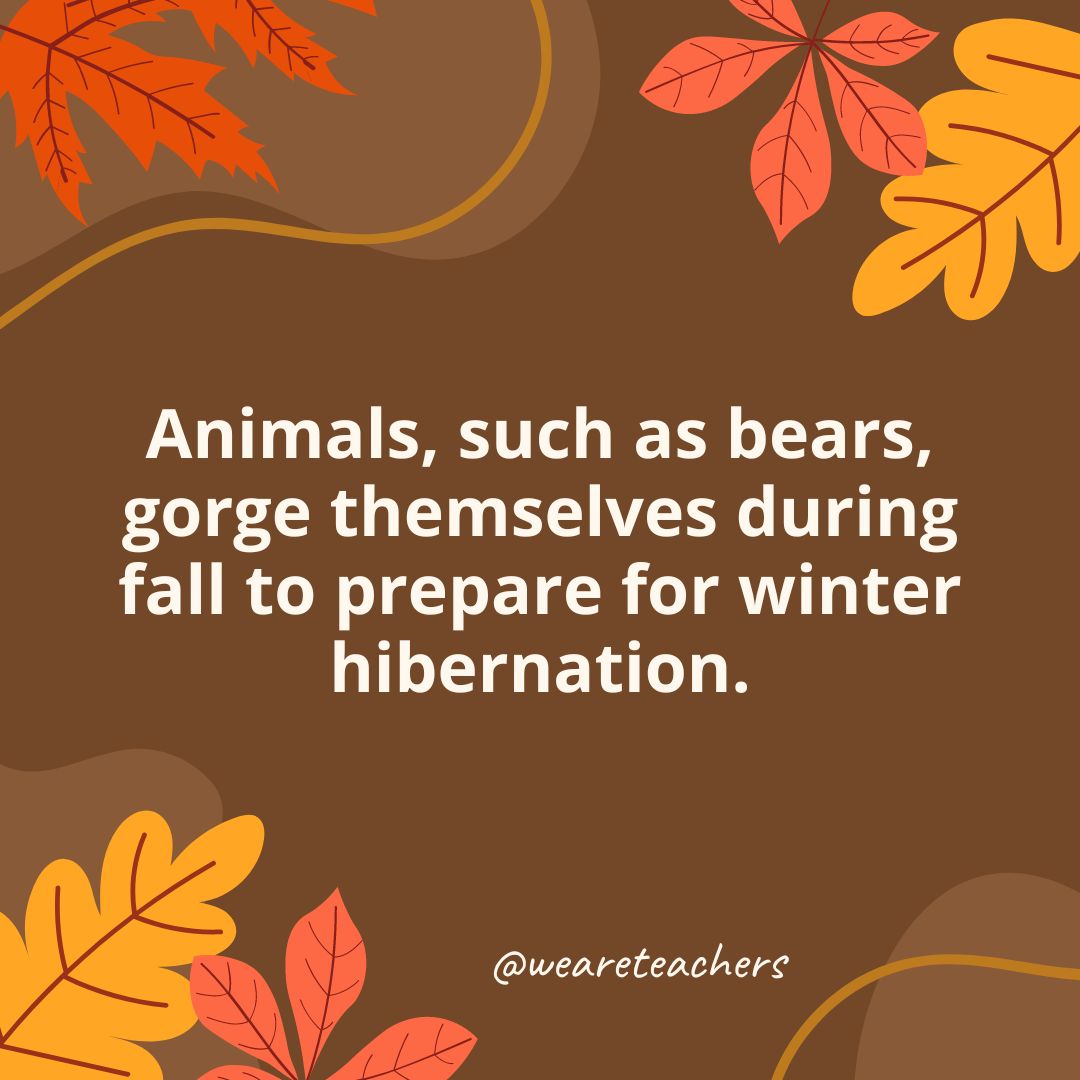
Black bears can eat up to 20,000 calories each day during autumn. (North American Bear Center)
Some animals use the fall months to migrate south, away from frigid temperatures.
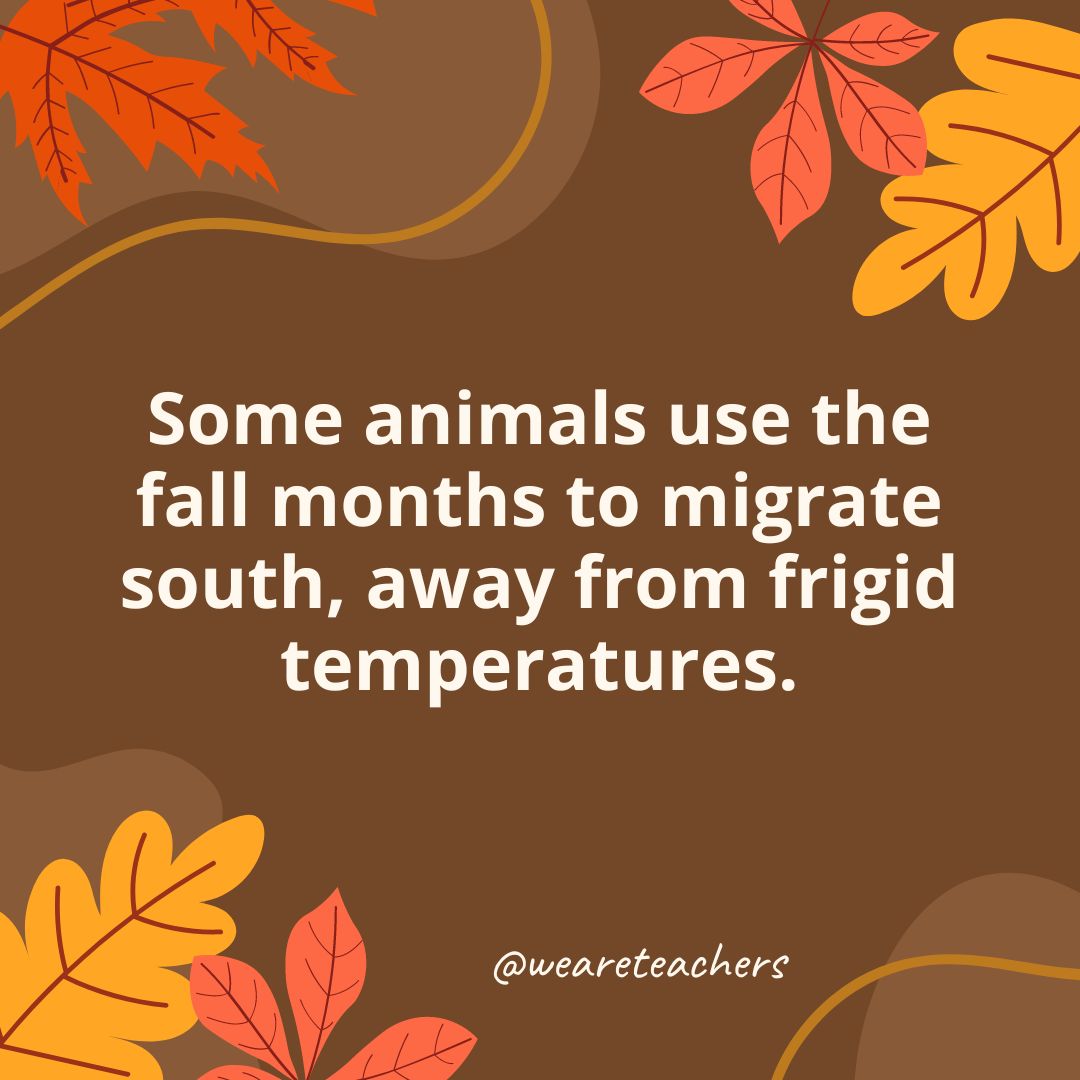
Some travel huge distances, like monarch butterflies (up to 3,000 miles) and arctic terns (25,000 miles). (National Geographic)
Facts About Fall Holidays
In the Northern Hemisphere, Halloween takes place in the fall on October 31.
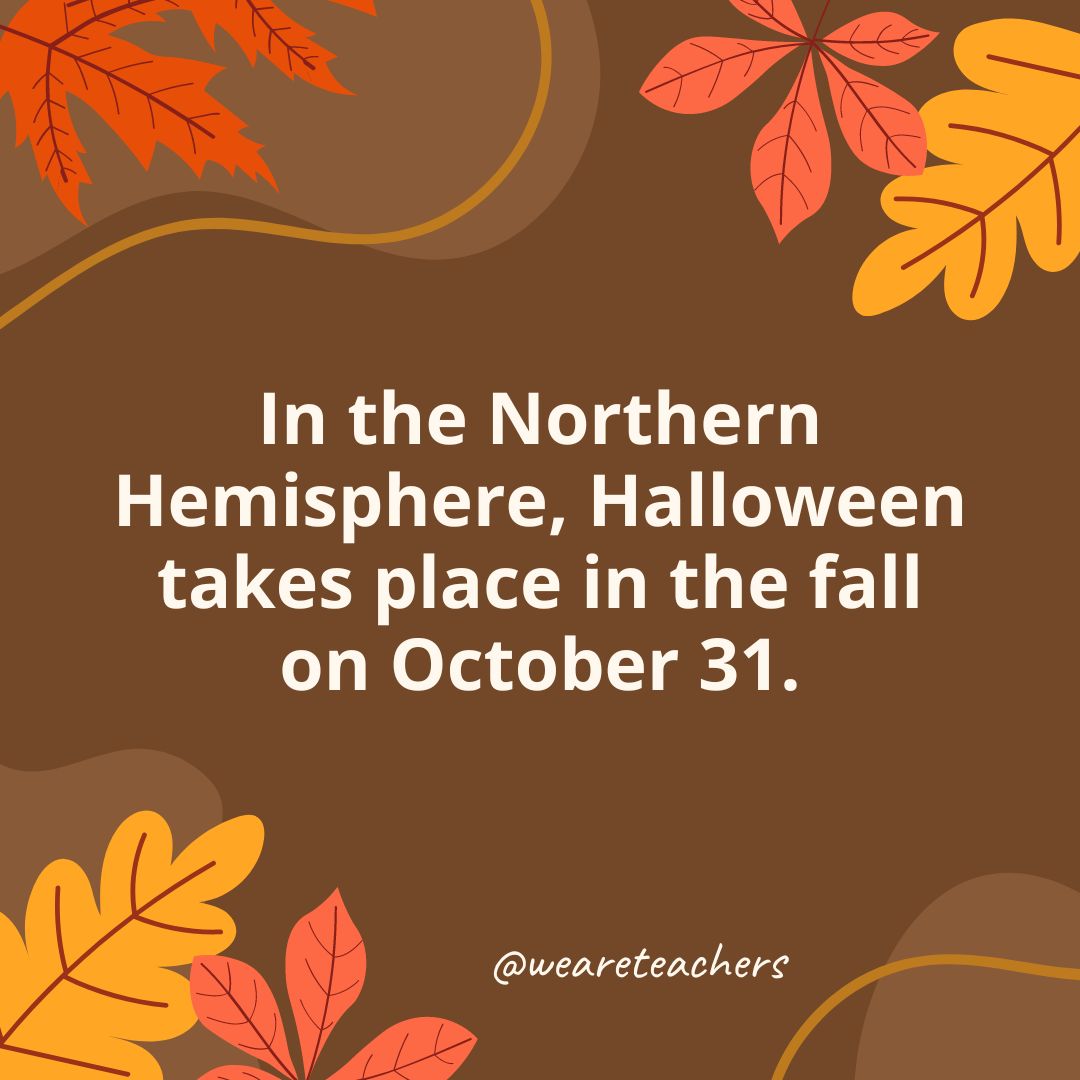
In North America, many people carve jack-o’-lanterns from pumpkins, a native vegetable harvested in autumn. (History.com)
Fall is the harvest season in many places, as farmers gather in their crops.
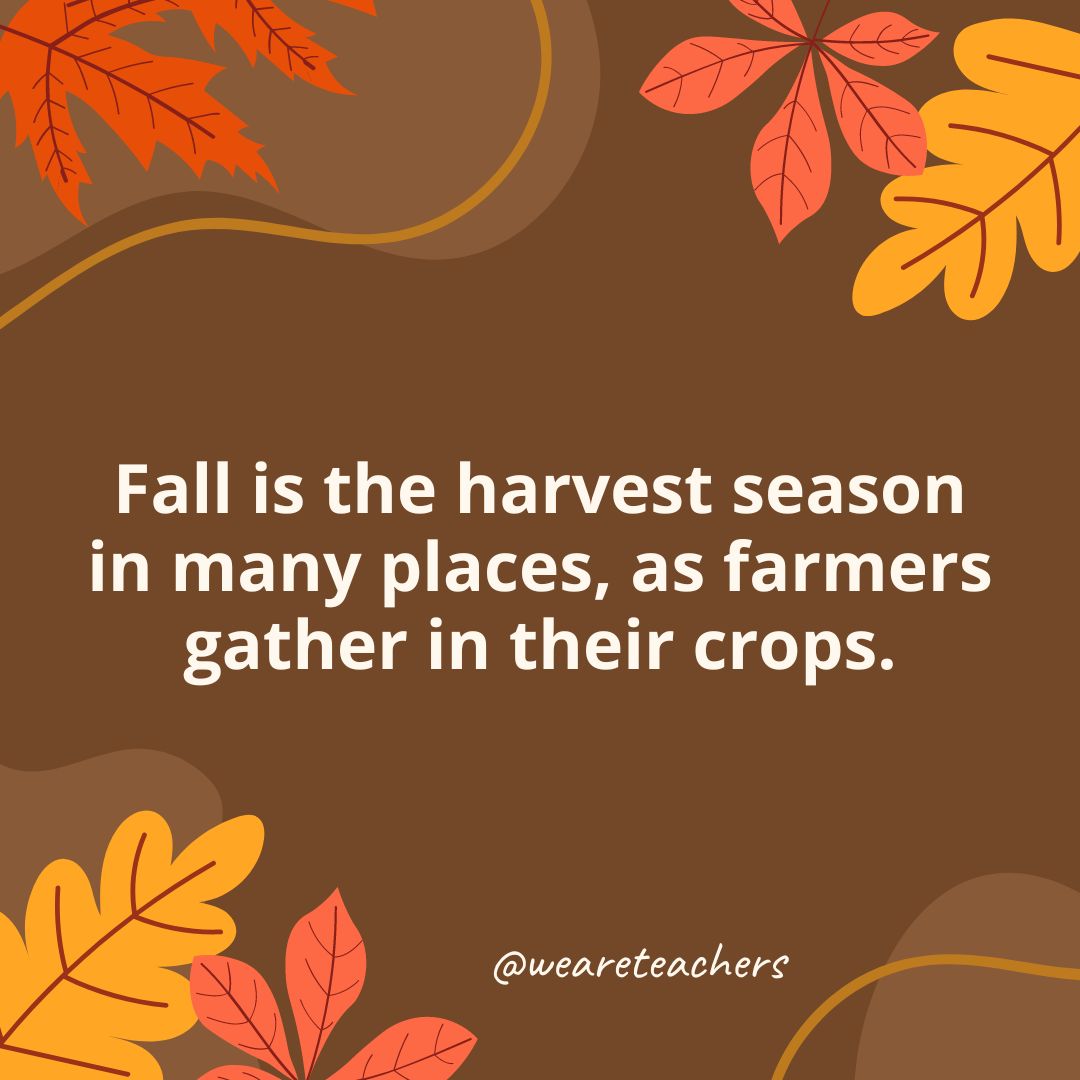
Long before the Pilgrims held what many Americans consider to be the first Thanksgiving, indigenous people like the Wampanoag held celebrations to express their thanks for a bountiful harvest. Today, November is Native American Heritage Month. (National Museum of the American Indian)
Both the United States and Canada celebrate Thanksgiving in the fall.
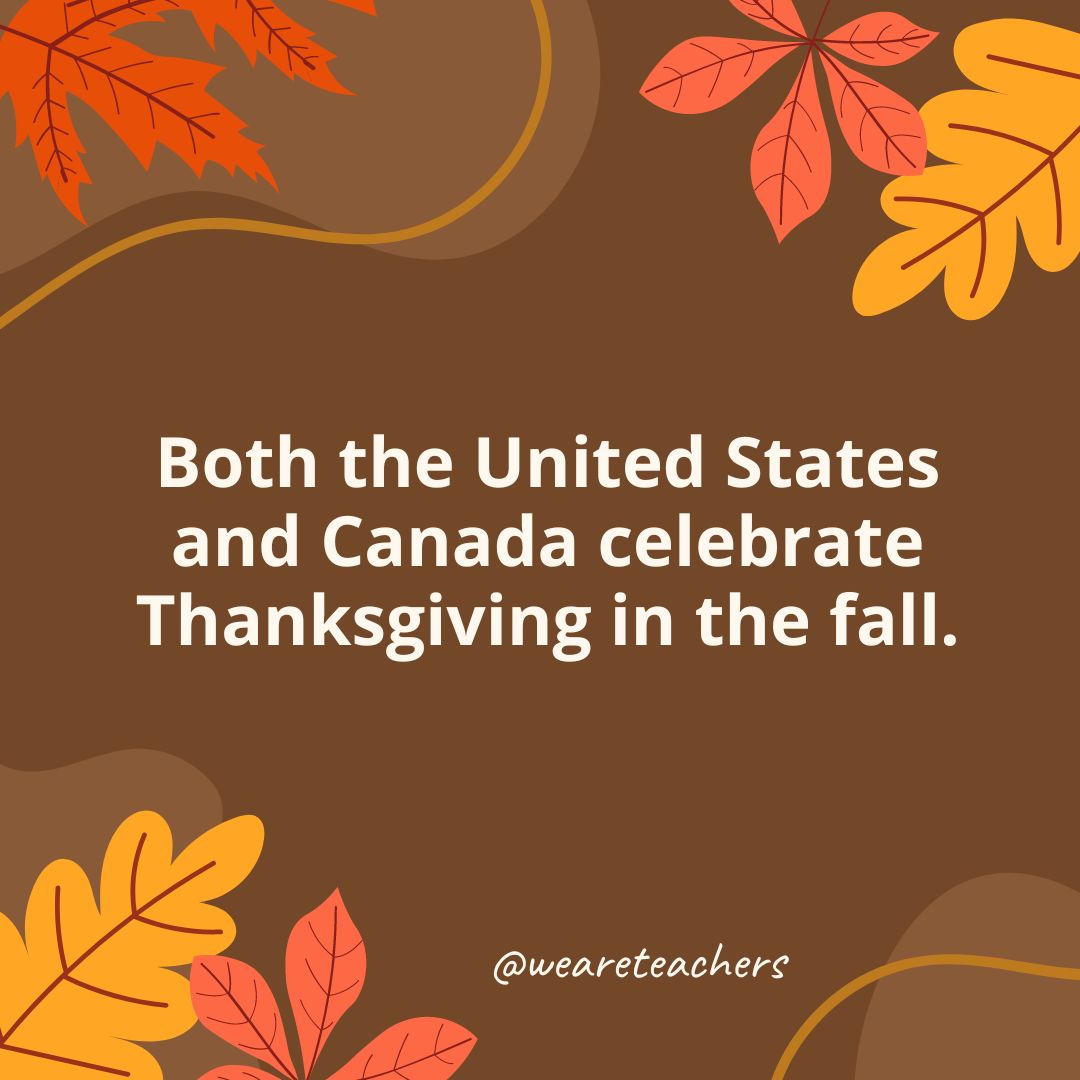
In Canada, it takes place in October. In the United States, Thanksgiving is celebrated on the fourth Thursday in November. (Thanksgiving Day at Britannica)
Veterans Day (November 11) is a fall holiday that celebrates those who served their country in the armed forces.
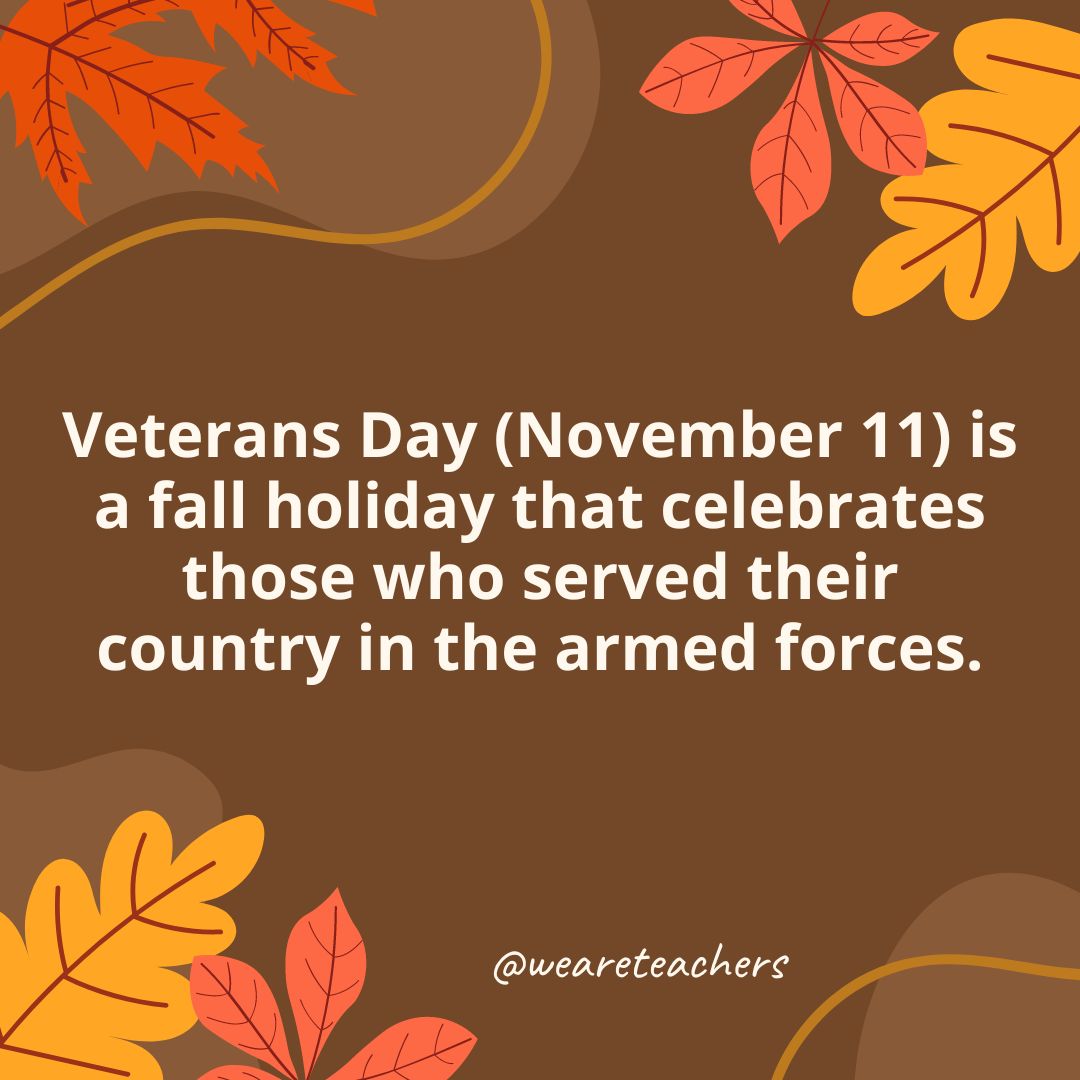
Other countries also celebrate this fall holiday—in Canada and the United Kingdom it’s known as Remembrance Day. (US Department of Veterans Affairs)
Many countries and cultures hold important celebrations during the fall months.
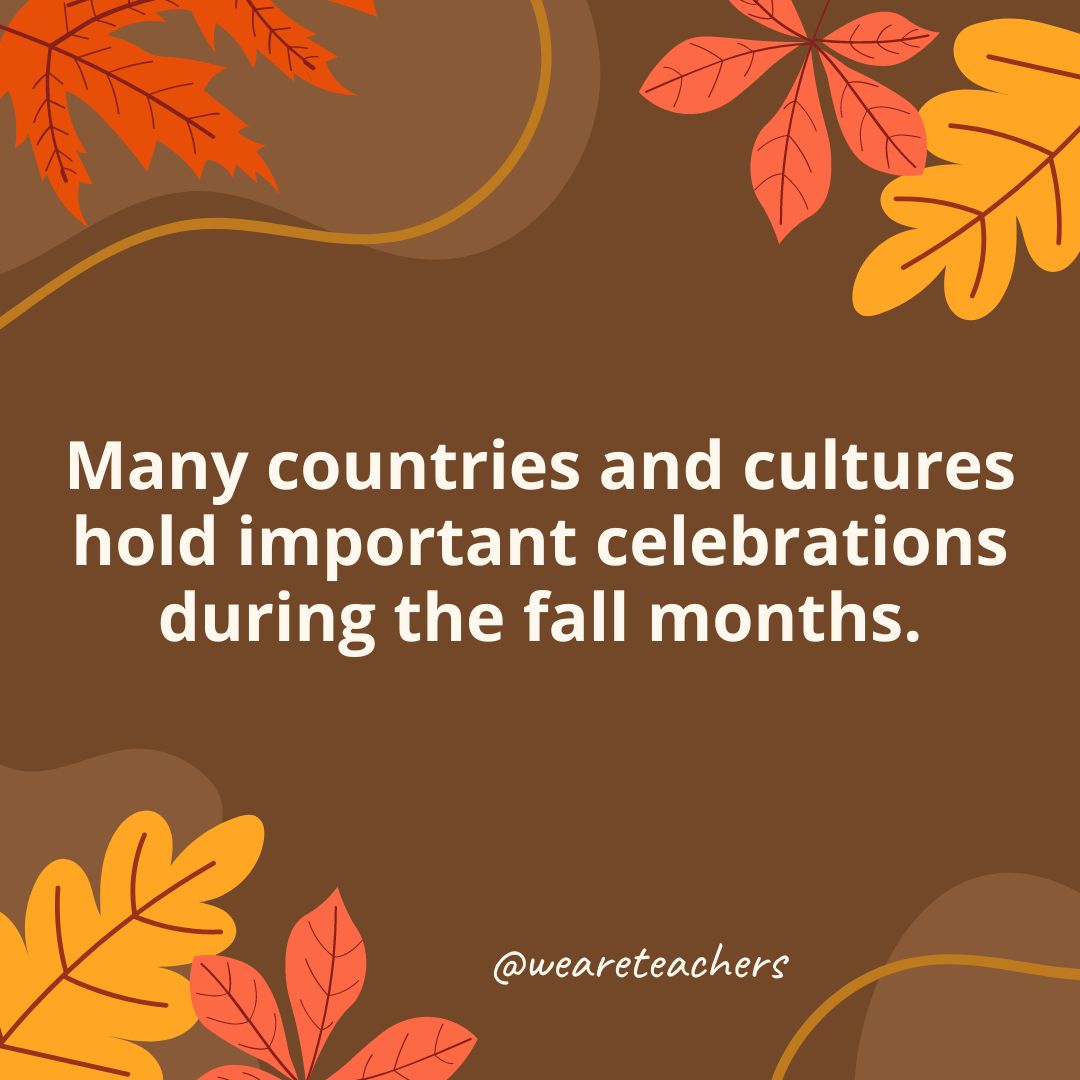
These include Día de los Muertos in Latin America, the Hindi festival of Diwali, Oktoberfest in Germany, and the Jewish High Holy Days of Rosh Hashanah and Yom Kippur. (US News and World Report)